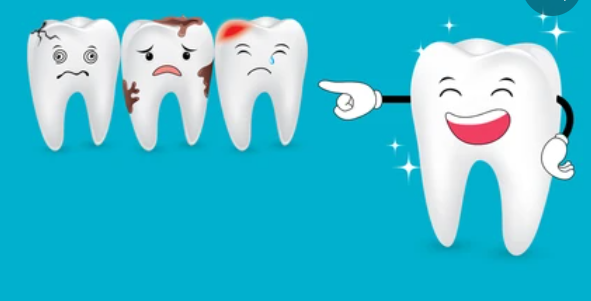“Don’t eat sugar – it’s bad for your teeth.” We heard this
as children, and we tell our own children too. Why is sugar so damaging? And
how do we avoid it, when it seems to be added to everything?
Sugar is one of the biggest factors that can contribute to
the development of tooth decay. Tooth decay is more than a nuisance. It can
cause pain and infection, and in children can affect nutrition, speech and jaw
development. If left untreated, tooth decay can go deeper into the tooth, which
may start to look yellow, brown or black.
How does sugar damage teeth?
Have you ever noticed that sticky film on your teeth? That’s
plague, and its stickiness means bacteria can cling to it. When plaque isn’t
regularly removed by brushing and flossing, it can accumulate minerals from
your saliva and harden into a substance called tartar that can only be removed
by your dentist.
When you eat sugary foods and drinks, the bacteria in plaque
feed on the sugars, producing acids in the process. It’s these acids that cause
problems like cavities (decay) along with gingivitis and other forms of tooth
decay.
Where is the sugar?
We know sugar is added to sweet food – confectionary, cakes,
biscuits. You’ll also find it in many savoury foods including sauces,
marinades, salad dressings, in breakfast cereals, and added to granola and
protein bars.
Sugar is particularly easy to overconsume in soft drinks,
with one 600ml bottles of soft drink containing 16 teaspoons of sugar. The
World Health Organisation (WHO) recommends that adults consume no more than six
teaspoons of free sugar (sugar added to food and drink) a day to decrease the
risk of tooth decay and unhealthy weight gain.

How to protect your teeth
- Read labels. There are over 50 names for added sugar,
including syrup, molasses, glucose, fruit juice concentrate, honey, coconut
sugar and rice malt syrup. When you are shopping, look out for these on the
list of ingredients.
- Swap out sugary snacks for a piece of fresh fruit, or some
plain, unsalted nuts and soft drinks for a glass of water.
- Brush and floss. Brush your teeth twice a day, and floss
daily to remove the plaque between your teeth.
- Visit your dentist. It is recommended to see your dentist
every six to 12 months so any tooth decay or gum disease can be spotted early
and treated.